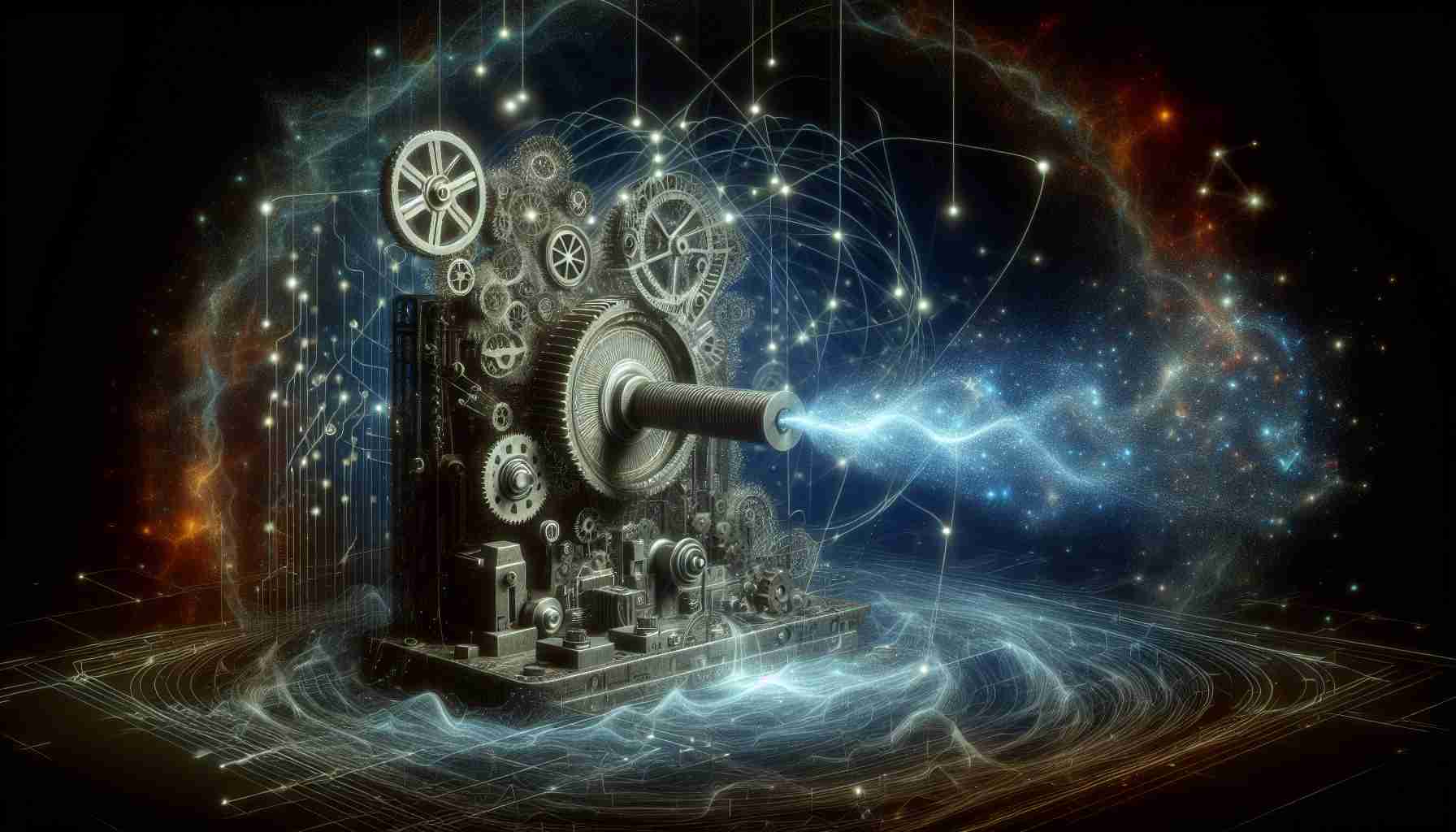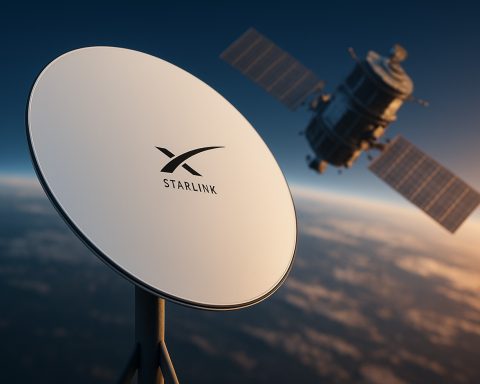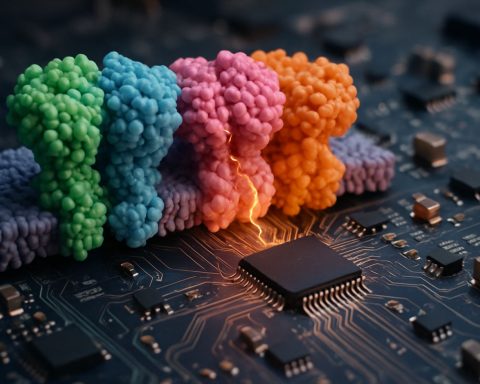A New Dawn for Quantum Mechanics
In a groundbreaking twist, recent discoveries in quantum mechanics suggest that the much-maligned noise may indeed spark revolutionary advancements in quantum technology. The findings have reimagined noise not as a nuisance but as a potential enhancer of quantum entanglement when utilized strategically through ancilla systems, a development that could catapult the fields of computing and communication into a new era.
Harnessing the Chaos
Researchers have unveiled that applying controlled noise to an ancilla—a secondary quantum system—can amplify entanglement within a primary system. This protective mechanism counters traditional beliefs, illustrating that the interplay of noise and fast dynamics within the ancilla can yield considerable entanglement, safeguarding the primary system from debilitating decoherence. By adjusting noise and interaction strength in experimental setups of coupled fermion chains, increased entanglement was demonstrated, showcasing noise as a powerful ally rather than an adversary.
Revolutionizing Quantum Strategies
These revelations prompt a reevaluation of existing quantum error correction methods, which are notoriously complex and resource-hungry. By integrating controlled noise, it’s possible to streamline these processes, potentially slashing the resource demands and simplifying quantum state protection. However, this technique’s application in real-world quantum systems remains under exploration, with emphasis on scalability and practicality being paramount.
Peering into the Future
The implications go beyond technology; they touch on our economic and cultural relationships with tech. Embracing imperfections could align tech advancements with sustainable practices, reducing energy consumption in the quantum domain and possibly shrinking the tech industry’s carbon footprint. As research progresses, the potential to redefine quantum systems’ efficiency and robustness continues to grow, marking an exciting frontier in quantum science.
Quantum Revelations: Transforming Technology and Humanity’s Future
Recent discoveries in quantum mechanics have uncovered a surprising ally in the form of noise, traditionally seen as a hindrance in technology development. This newfound perspective redefines noise as an enhancer of quantum entanglement when applied to ancilla systems, potentially transforming key areas such as computing and communications. This breakthrough marks the onset of a new era in quantum technology, with far-reaching implications for the environment, humanity, and the global economy.
Environmental Impacts and Sustainability
One profound environmental impact of this quantum revelation is the potential to decrease energy consumption in quantum computing. Traditional quantum error correction methods are known for their high resource demands, often leading to significant energy usage. By leveraging controlled noise as an advantageous factor, these processes can be simplified and made more efficient. This not only reduces the operational costs of quantum computers but also contributes to a decrease in the tech industry’s overall carbon footprint. As quantum computing becomes more energy-efficient, it aligns more closely with global sustainability goals, promising a greener future where advanced technology coexists harmoniously with Earth’s ecological systems.
Economic Implications and Technological Evolution
Economically, the integration of controlled noise into quantum systems could lower the barriers to entry for companies looking to adopt quantum technology. By reducing the complexity and resource needs of quantum processes, smaller businesses could find it more feasible to engage with quantum computing and communications. This democratization of access could spark innovation, diversify the tech landscape, and bolster new industries centered around quantum technology. In the long run, this shift might lead to economic growth, a rise in technological employment, and the creation of new markets, thus strengthening the global economy.
Human Progress and Cultural Shifts
On a cultural and human level, embracing the imperfections highlighted by this quantum advancement encourages a broader philosophical shift toward accepting and utilizing uncertainties. It challenges the prevailing notion that noise and errors are inherently negative, reframing them as potential tools for progress and enlightenment. This perspective fosters a culture of resilience and creativity, encouraging humanity to look for opportunities within obstacles—a mindset that could drive future societal and technological breakthroughs.
Future Prospects
Looking forward, the strategic use of noise in quantum mechanics represents not just a technical achievement but a paradigm shift with expansive implications for the future of humanity. As research progresses, the ability to harness these imperfections could lead to more robust quantum systems, accelerating the realization of powerful quantum computers and secure quantum communications. These advancements might unlock new realms of discovery and possibility, marking another step toward a future where technology and humanity are seamlessly integrated into a sustainable and innovative global ecosystem.
Revolutionary Impact of Noise in Quantum Mechanics
New Horizons in Quantum Technology
Recent advancements in quantum mechanics have turned the tables on traditional views of noise, portraying it as a catalyst for innovation rather than a hindrance. These groundbreaking discoveries highlight how strategic use of noise within ancilla systems can substantially improve quantum entanglement, offering transformative potential for the fields of computing and communication. As scientists pivot their approach, noise is increasingly seen as a strategic ally in the next phase of quantum technological evolution.
Practical Innovations and Implications
By injecting controlled noise into secondary quantum systems, or ancillas, researchers have discovered methods to amplify entanglement within primary systems. This breakthrough challenges longstanding beliefs about noise being a detrimental factor, revealing instead a complex interplay that can preserve quantum states from decoherence. The application of noise manipulation has been tested using coupled fermion chains, where the results showed enhanced entanglement, proving noise can indeed be a powerful component in quantum mechanics.
Rethinking Quantum Error Correction
The newfound utility of noise has considerable implications for quantum error correction strategies. Traditionally known for their complexity and resource-intensive nature, these processes could be vastly simplified through the controlled application of noise. This innovation promises to lessen resource burdens, potentially making quantum computing more accessible and efficient. Nevertheless, its real-world implementation requires careful evaluation to ensure scalability and applicability across various quantum systems.
Towards Sustainable Quantum Practices
Beyond the technological realm, these developments hold promise for more sustainable quantum practices. By utilizing imperfections like noise, there’s potential for reducing energy consumption within quantum systems, which could significantly lower the carbon footprint of the tech industry. This shift not only enhances the efficiency and robustness of quantum systems but also aligns with global sustainability goals, making quantum mechanics a frontier not just of scientific inquiry but also of environmental conscientiousness.
Future Predictions and Trends
Looking ahead, the integration of controlled noise in quantum systems signals a pivotal moment in the field. As research continues to unfold, predictions suggest that embracing noise could lead to more robust and efficient quantum technologies. The potential for breakthroughs in quantum computing and communication is immense, with possibilities that could redefine how we interact with and utilize technology on a global scale.
For more information, explore the latest updates in quantum mechanics research and its implications on quantum technology.










